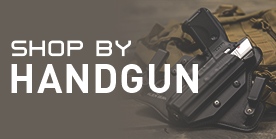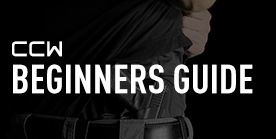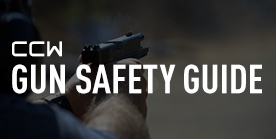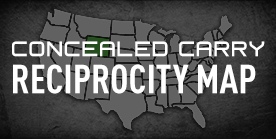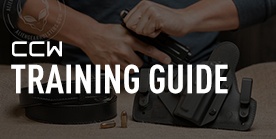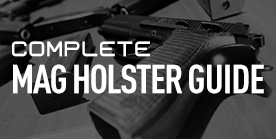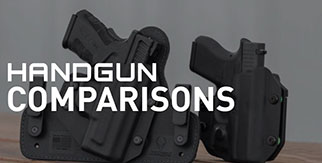What You Need To Know About Magazine Holsters, Mag Carriers And So On [updated 2021]

One of the most vital accessories for a pistol besides a gun belt and a decent holster is certainly having a few magazine carriers. They are vital for practice, training and competition, and necessary for carrying spare ammunition should you choose to while out in the world.
Some do as a matter of course, others don't; that much is all up to you.
In this guide, we'll go over what you need to know about mag carriers. What you should look for in one, types of them that are out there, whether you need to carry one or not, and everything in between.
The Types Of Magazine Carriers

Magazine carriers have a number of different designs, just like holsters do. Just like holsters, each has a different purpose and best way to use it; it's a tool, with a specific task that it's supposed to do.
Some mag carriers are good for daily carry and concealment, others are more for range and competition use, some are more for duty use. The design details influence what the magazine holster is supposed to be used for, and what you get a particular type for.
Remember folks: mission drives the gear train, as the old saying goes!
OWB and IWB Magazine Holsters

Just like gun holsters, there are OWB and IWB magazine holsters. There are a lot of common design features between mag carriers and gun holsters, since both things essentially do the same thing of holding an object in place.
There's a trend of integrating the magazine carrier into a holster, commonly called a "sidecar" design. While there are some positive attributes to the idea, rarely does it work well in the real world. Sidecars really only work in the appendix position, but tend to be uncomfortable and prone to breaking.
Almost all magazine holsters are designed for use on the waistband, some inside, some outside and some are convertible in that they can be used either way by modifying the attachments. The materials used are just like gun holsters; there are leather mag carriers, Kydex or other polymers, and hybrid designs which combine a soft material against the body and hard material to retain the magazine.
Some are made with active retention - meaning a retention strap or other device that has to be removed to draw the magazine - and some are not.
Most mag holsters are made to fit a specific magazine or at least a specific size of one; typically they're made for double- or single-stack of 9mm/.40, or double- or single-stack magazines for 10mm and/or .45 ACP. Some magazines will be made to fit more precisely than others.
Some magazine carriers are made of a softer, durable cloth that are intended to just get tucked into the waistband. Some may include a belt clip, and some might not. The idea is to tuck it in the waistband and tension from your belt will retain them. This type is something of a one-way mag carrier; while it can hold the magazine, you cannot reinsert the magazine.
Just as with pistol holsters, some are designed to be easily concealed and some aren't.
Orientation: Right- or Left-Handed, Vertical or Horizontal Mag Carriers

Just like a gun holster, mag carriers are made with right- or left-hand orientation. However, the difference is that the magazine is carried on the non-dominant side. Right-handed people tend to carry their magazine on the left side, and lefties carry theirs on the right.
There are some exceptions, however. The dominant reloading techniques for revolvers use the non-dominant hand to operate the ejector rod and then grasp the pistol; revolver shooters will therefore put their speedloader or moon clip pouches on the dominant hand side.
Most magazine holsters have a vertical orientation, so they are straight up and down. Some give you the ability to cant it a bit forward or backward, some don't. There are also a small number of horizontal mag carriers, which hold the magazine parallel to the belt for easier concealment.
Some mag holsters are configurable, so you can set them up however you want. IWB, OWB, vertical or horizontal as you want it to be.
Then You Have Magazine Pouches

There are also magazine pouches, which are usually made from some sort of durable cloth other than leather and may or may not include some sort of insert to give them a bit more rigidity.
Some are just made to be cheap, and others are intended to be a bit more durable for field use. Some include an active retention device, some don't.
While the term just means a pouch that's for a gun magazine, when people say it (or type it into a search engine) they're usually referring to a rifle magazine pouch for military and/or police use, like for an AR-15, AR-10, AK, or other common types of service rifle.
In the olden days, they would have been for stripper or en bloc clips for, say, an Enfield, Mauser or Garand rifle.
There are plenty of magazine pouches still being made, but the modern form of course is an individual pouch that you attach to something like a belt, a vest or a chest rig.
Why Carry A Spare Magazine?
The "need" to carry a reload is something of a hot topic. Whether you "need" to or not involves a lot of context, nuance, possibilities and probabilities.
On it's face, carrying spare ammunition - a magazine for a semi-auto or a speed strip, moon clip or speed loader for a revolver - is a good idea in case of malfunction or if you run out of bullets without having run out of bad guys. After all, the most common malfunctions are related to the magazine or the ammunition and sometimes bad guys have friends.
You have to take any gunfight statistics or ideas out there with a grain of salt. What police deal with, what soldiers deal with, and what armed civilians deal with are all very different; the incentives of the participants are different, the goals are all different and therefore the gunfights are different.
What evidence is out there indicates that armed civilians who do end up having to shoot in self-defense rarely, if ever, need to reload. Most studies into civilian defensive gun use indicate that merely drawing the gun and pointing it at an assailant tends to ward them off in most cases; few civilian shootings involve more than a few rounds being fired.
Of people who study civilian gunfights, the consensus is that emergency reloads in civilian shooting incidents are rare to nonexistent. Claude Werner looked at 482 incidents from 1997 to 2001 and found 3 instances where a reload was required in civilian-involved shootings...though one was a zookeeper reloading a .32 revolver to repeatedly shoot a lion that was about to escape. The Active Self Protection channel has not yet found an incident where a civilian-involved shooting involved an emergency reload despite a number of officer-involved incidents. Rangemaster's Tom Givens keeps tabs on any students who are involved in shootings, and out of more than 60 incidents (and Rangemaster students are undefeated in gunfights) none involved a reload of any sort.
In other words, civilians just don't get themselves into protracted gunfights.
What police data indicates is that most officer-involved shootings (OIS) involve few shots being fired as well. The Police Policy Studies Council reports the mean number of shots in an OIS involving the NYPD from 1990 to 2000 was 5.2 shots per OIS, with a low average of 3.6 shots and high average of 6.9 shots. Shooting incidents where an officer discharged their weapon but didn't hit a suspect, averaged 2.86 shots.
In that same period, the Miami-Dade PD reported a mean of 2.5 shots per OIS using revolvers and 3.2 shots using semi-autos. The LAPD reported a mean of 3.59 shots per OIS involving one officer, 4.98 shots in incidents involving two officers and 6.48 shots in incidents involving more than two officers.
As we can see, the evidence indicates that even police do not have to shoot their guns dry in most shooting incidents. However, we also know that sometimes they do; a lot of people are aware of the Tim Gramins shooting and of course the 1986 Miami shootout and North Hollywood bank robbery. The latter shooting involved more than 2,000 rounds being fired!
So while there are some salacious, high-profile exceptions...the reality is that there is little data-supported need for a reload in terms of the threats that armed civilians actually are confronted with.
However, the above figures also indicate the average shooting will take somewhere between 2 and 7 shots to resolve. Therefore, if you carry a pistol with lower capacity such as a snubnose revolver or 1911 in .45 ACP, it starts to become a little more necessary.
Wearing A Mag Carrier

Wearing a mag carrier isn't mysterious (you put it on, you put the magazine in and away you go) but there are some nuances depending on exactly what you're doing with one.
The low-tech solution, of course, is to carry your reload in your pants or jacket pocket. In previous eras, urban police would often have a pistol in multiple pockets along with their service revolver, so it's not an invalid approach so long as you practice reloading from the pocket.
Just like concealing an IWB or OWB holster, the magazine carrier has to be placed in a location that allows the shirt to be draped over it and concealing it (not merely covering!) from view. You'll need to experiment with location to find the balance of comfort and concealment.
An OWB mag carrier will be harder to conceal than one worn inside the waistband. A horizontal orientation, however, can make it much easier to conceal.
If you train with an OWB mag holster at the range, the best practice is to carry it in the same spot when you carry concealed. It's also a good idea to put in dry and live fire practice wearing your street clothes and working on reloads from concealment, so you build up that muscle memory.
What To Look For In A Magazine Carrier
First, have the purpose in mind.
Is this a mag carrier for range use only? Are you just using this for practice and training or maybe competition? Or are you also going to be using it for daily carry? Mission drives the gear train, as the saying goes; select a mag carrier for the purpose you have in mind.
Above all else, a magazine carrier has to securely hold the magazine. It should be made for the specific caliber and magazine size that you are carrying, such as 9mm/40 double stack or what have you.
The magazine should be secure once inserted. You want sufficient tension to hold the magazine, but not necessarily so much that it's difficult to draw.
If you are going to be using it on a daily basis, it should be comfortable enough for you to wear for hours on end without issue whether it's inside or outside the waistband. Otherwise you're going to find excuses not to carry a spare magazine or you'll just put the reload in your pocket.
It isn't complicated, but make sure you start with a mag carrier that's suited for the role you have in mind, that works correctly, and that you can use without driving yourself insane. That will get you the best results.
After you get the mag carrier you're looking for, it's time to get to the range and practice.
About The Author
Thank you
Keith Kinlaw
Monroe, NC




